Abstract
The effects of various smoking cessation strategies were studied in two multicentre trials with new patients attending hospital or a chest clinic because of a smoking related disease. In the first trial (study A, 1462 patients) the effect of the physician's usual advice to stop smoking was compared with the effect of the same advice reinforced by a signed agreement to stop smoking by a target date within the next week, two visits by a health visitor in the first six weeks, and a series of letters of encouragement from the physician. The second trial (study B, 1392 patients) compared (1) advice only, (2) advice supplemented by a signed agreement, (3) advice supplemented by a series of letters of encouragement, and (4) advice supplemented by a signed agreement and a series of letters of encouragement. Patients were reviewed at six months and those claiming to have stopped smoking were seen again at 12 months. Claims of abstinence were checked by carboxyhaemoglobin measurement. In study A 9% of the intervention group had succeeded in stopping smoking at six months compared with 7% of the "advice only" patients (p = 0.17). In study B success rates were 5.2%, 4.9%, 8.5%, and 8.8% respectively. The signed agreement did not influence outcome, whereas postal encouragement increased the effect of the physician's advice. In both studies patients reviewed clinically between the initial and the six month visit were more likely to stop smoking than those not reviewed. Success rates increased with age and men tended to do better than women. The studies suggest that physician's advice alone will persuade 5% of outpatients with a smoking related disease to stop smoking. Subsequent postal encouragement will increase the cessation rate by more than half as much again. Such small improvements in success rates are worth while, especially if they can be achieved cheaply and on a wide scale.
Full text
PDF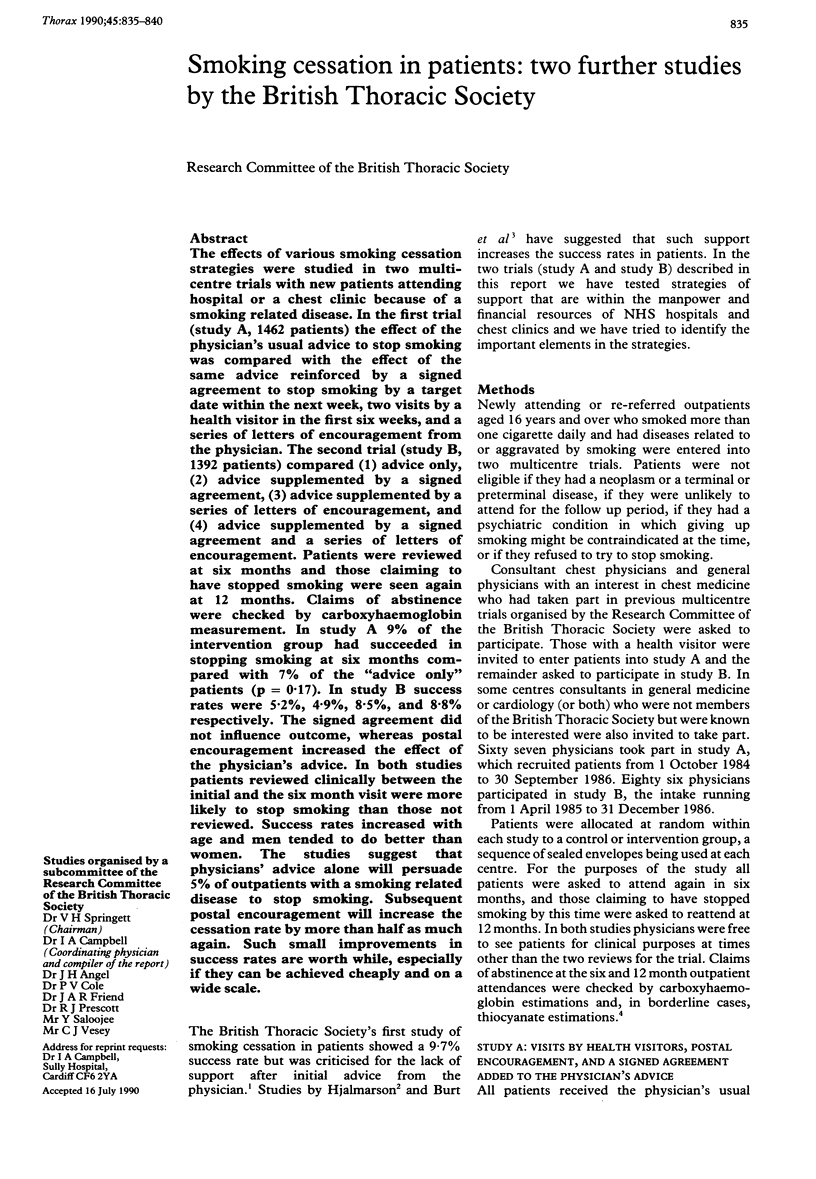
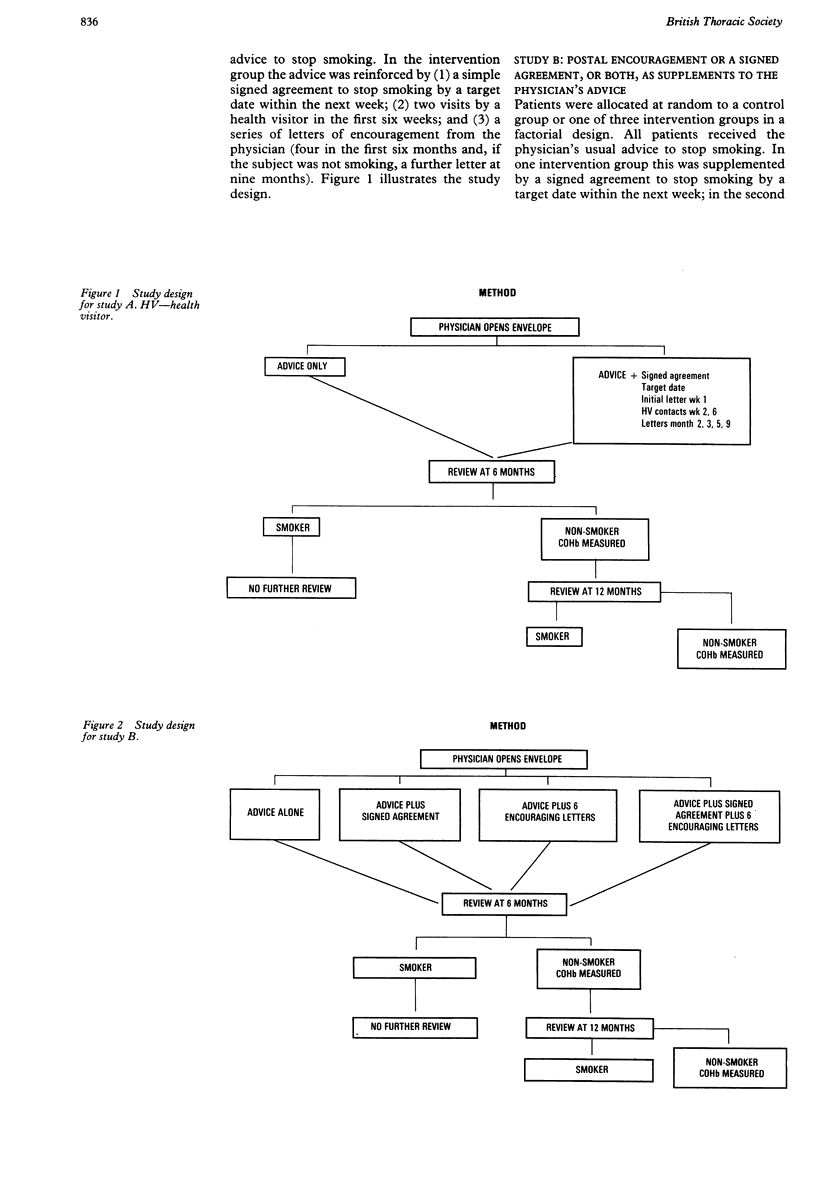
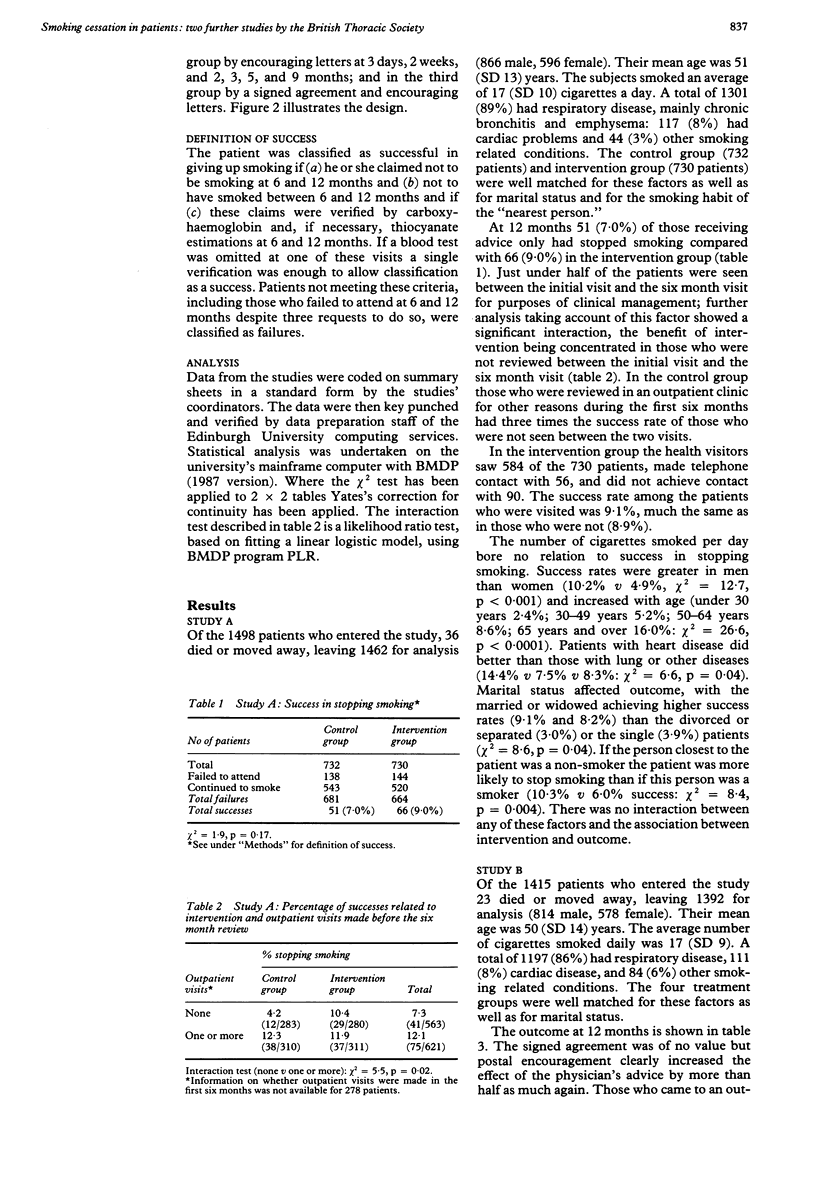
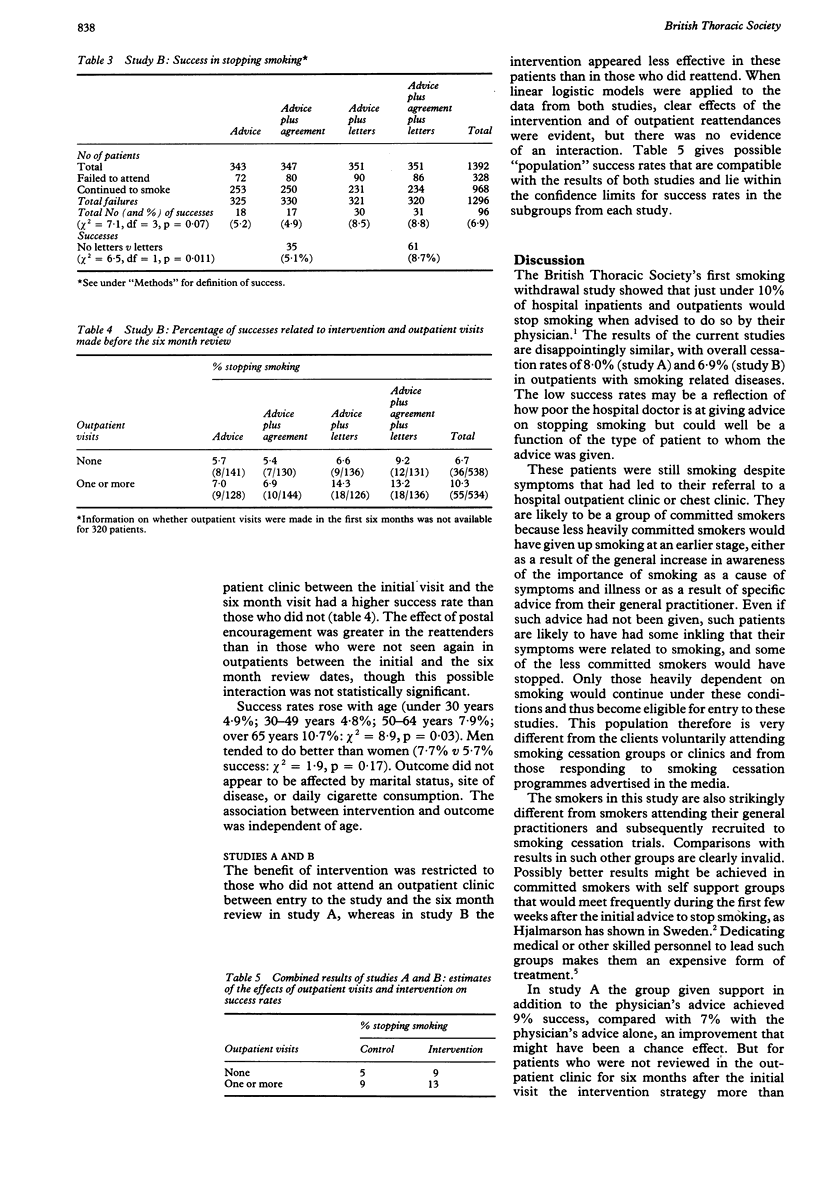
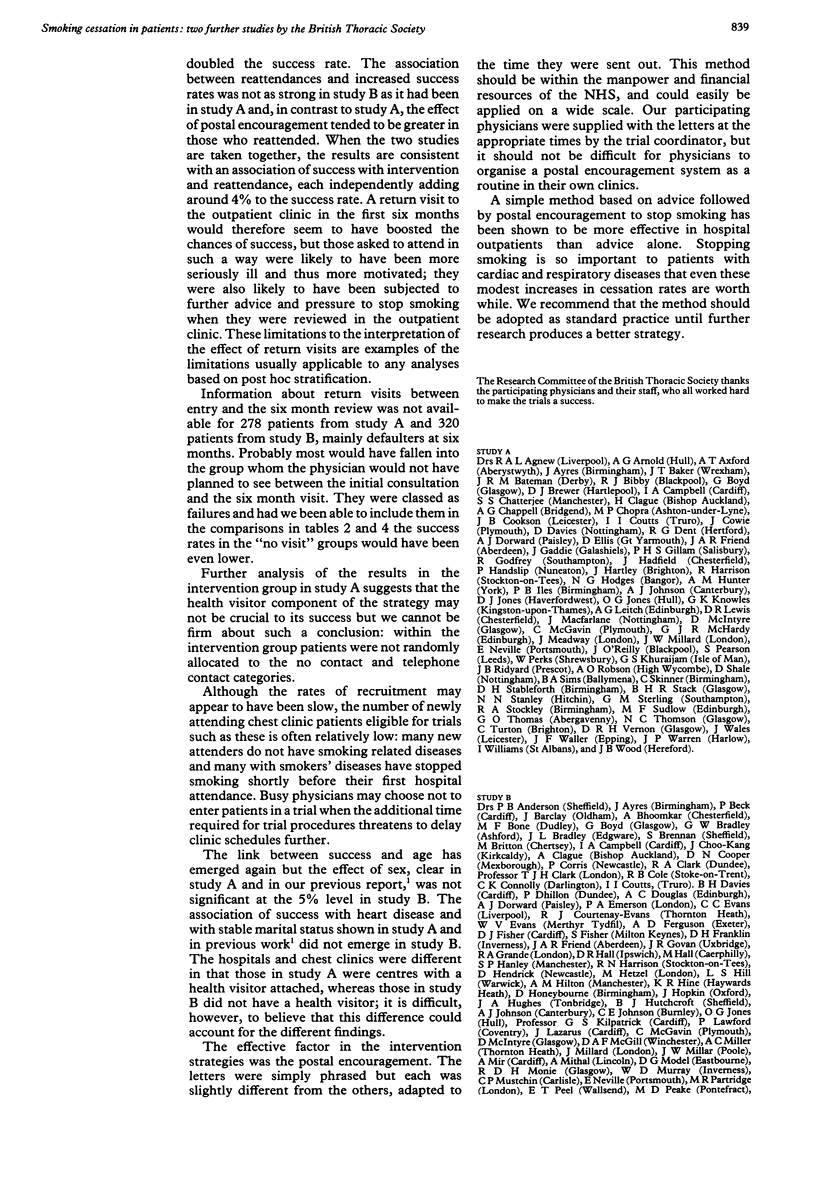
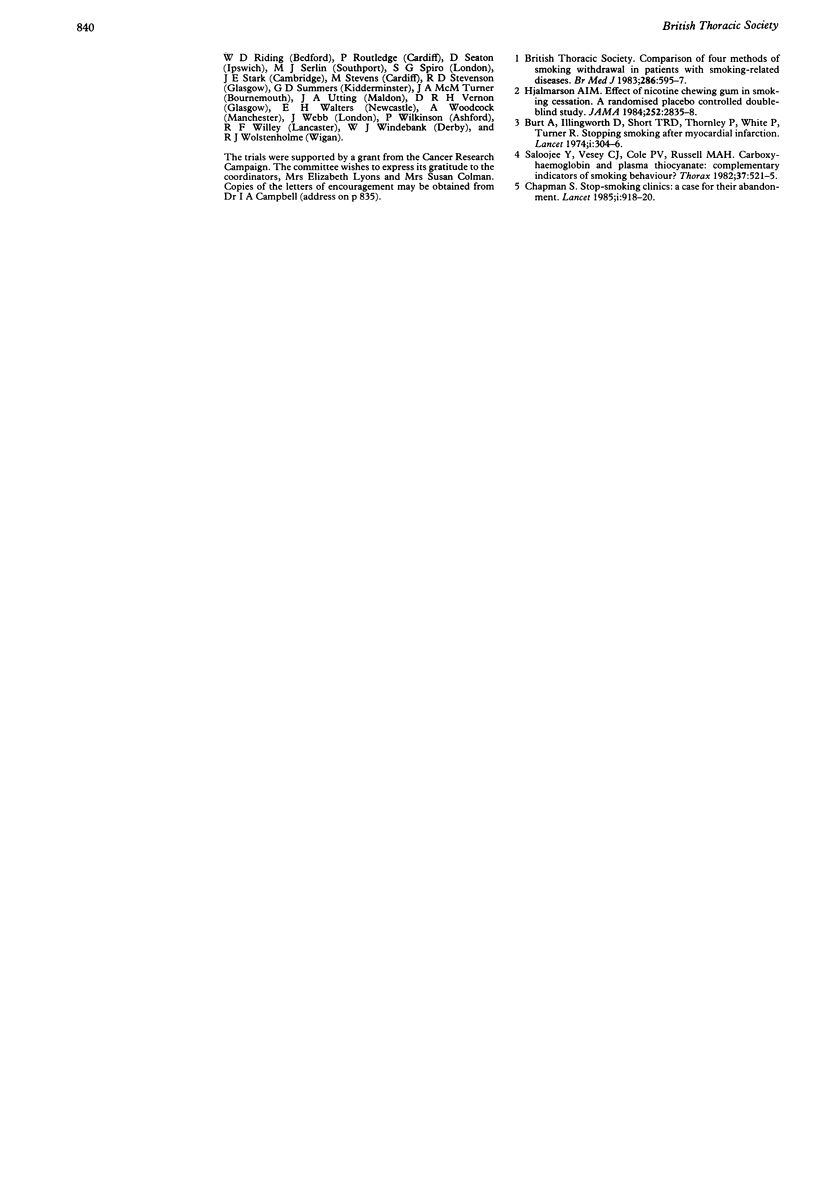
Selected References
These references are in PubMed. This may not be the complete list of references from this article.
- Burt A., Thornley P., Illingworth D., White P., Shaw T. R., Turner R. Stopping smoking after myocardial infarction. Lancet. 1974 Feb 23;1(7852):304–306. doi: 10.1016/s0140-6736(74)92607-5. [DOI] [PubMed] [Google Scholar]
- Chapman S. Stop-smoking clinics: a case for their abandonment. Lancet. 1985 Apr 20;1(8434):918–920. doi: 10.1016/s0140-6736(85)91685-x. [DOI] [PubMed] [Google Scholar]
- Hjalmarson A. I. Effect of nicotine chewing gum in smoking cessation. A randomized, placebo-controlled, double-blind study. JAMA. 1984 Nov 23;252(20):2835–2838. [PubMed] [Google Scholar]
- Saloojee Y., Vesey C. J., Cole P. V., Russell M. A. Carboxyhaemoglobin and plasma thiocyanate: complementary indicators of smoking behaviour? Thorax. 1982 Jul;37(7):521–525. doi: 10.1136/thx.37.7.521. [DOI] [PMC free article] [PubMed] [Google Scholar]


